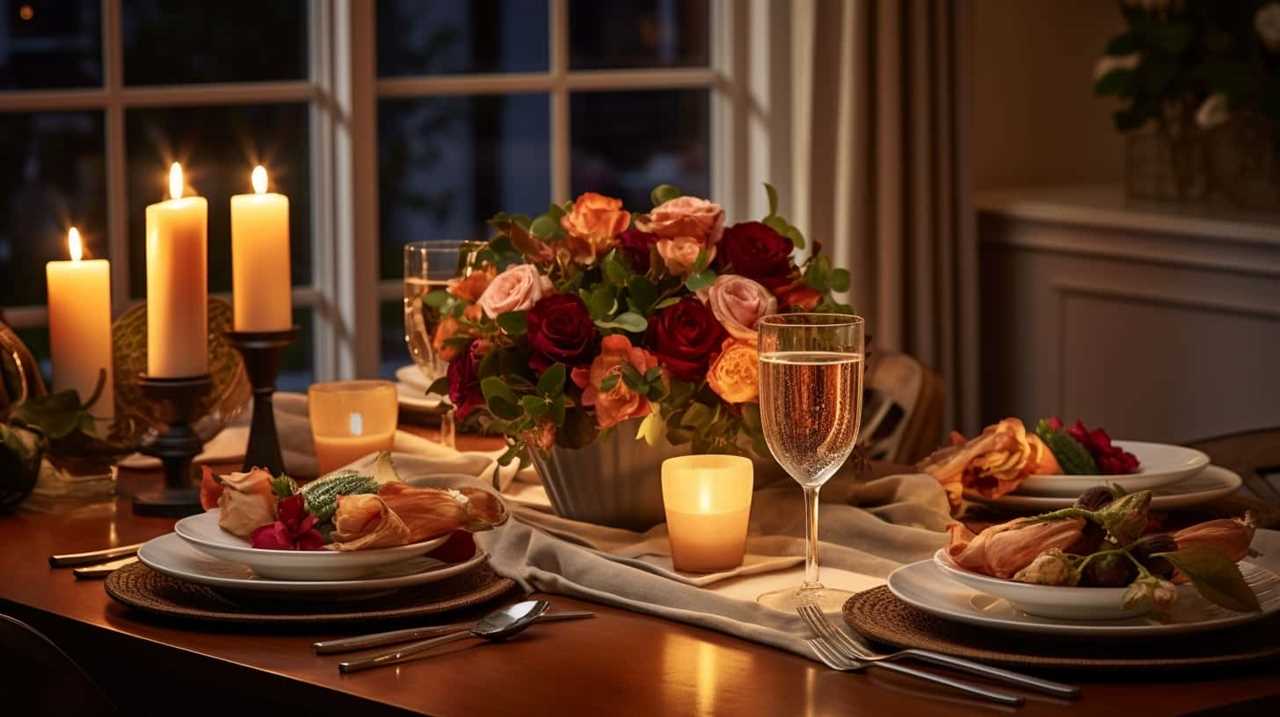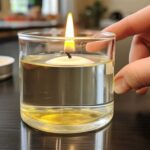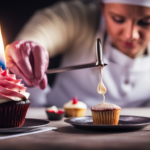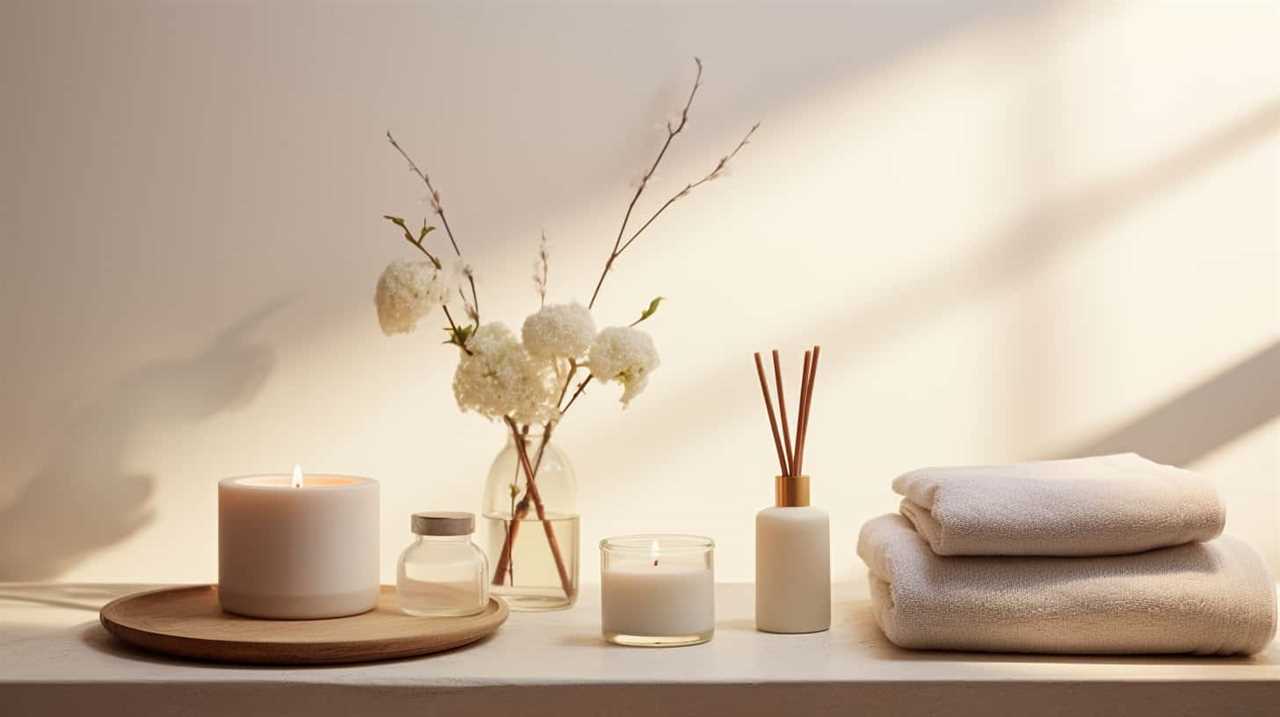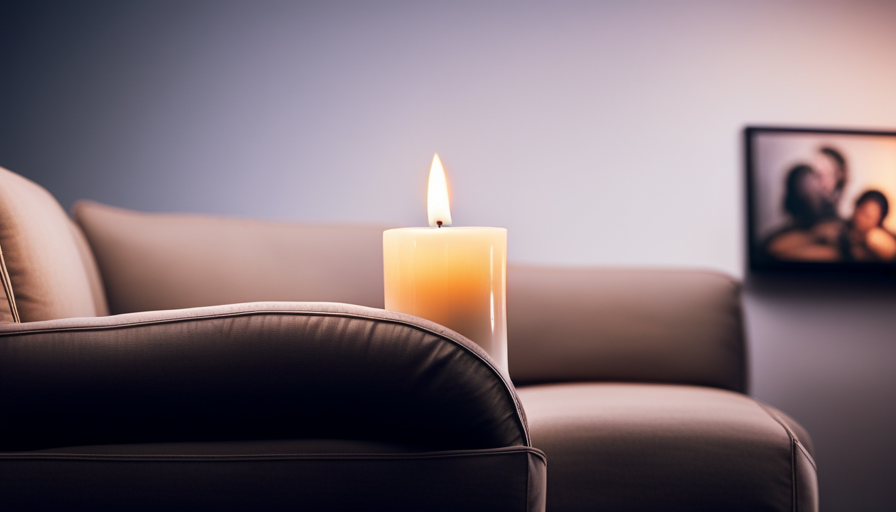Have you ever cherished a candle that burned out too fast? It feels like a lovely sunset disappearing too soon before you can truly enjoy its warmth and radiance.
Well, fear not! We’re here to show you how to refill your candle and bring back that cozy ambiance.
In just a few simple steps, we’ll guide you through the process of gathering supplies, preparing the jar, choosing the perfect wax and fragrance, and adding the finishing touches.
By the end, you’ll have a newly refilled candle that’s ready to light up your space once again.
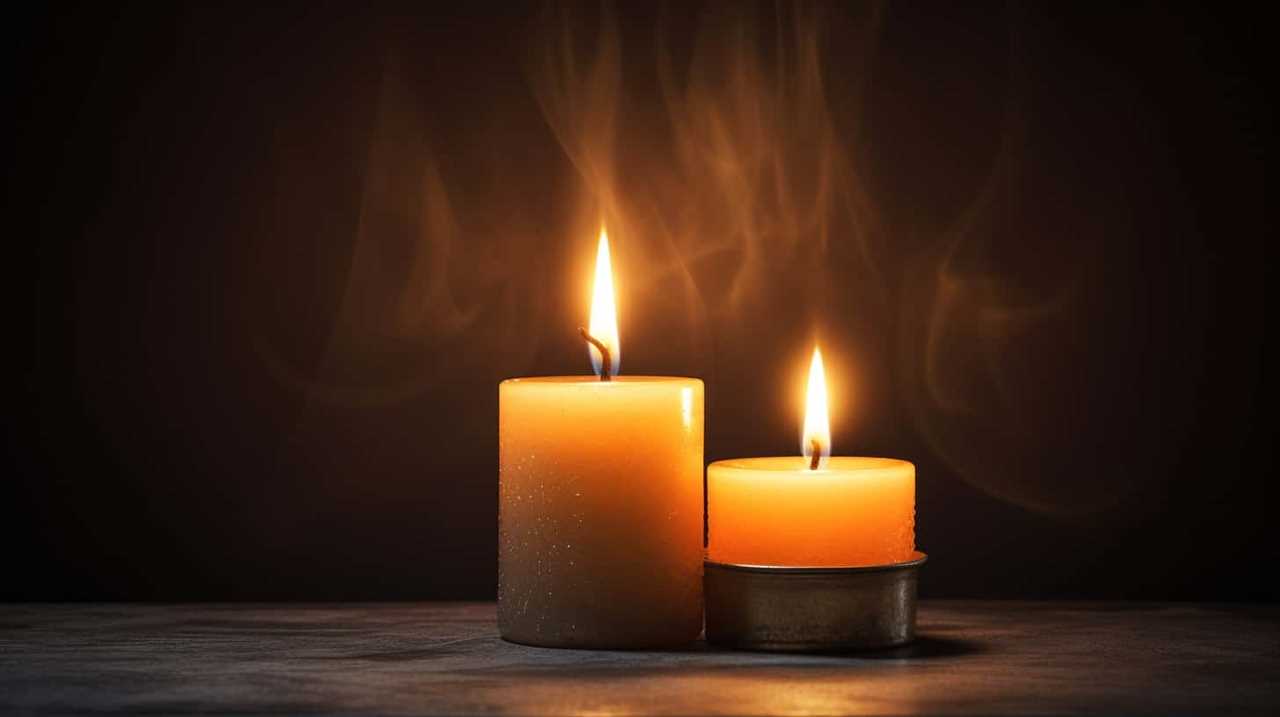
So, let’s get started and bring back the magic of your favorite candle!
Key Takeaways
- Choose a suitable wax for refilling, considering factors such as melting point and fragrance compatibility.
- Clean the empty candle container thoroughly to remove any residue or debris.
- Slowly pour the melted wax into the container, avoiding overfilling.
- Allow the wax to cool and solidify in the container, ensuring a level and smooth surface.
Gather Necessary Supplies
To begin refilling a candle, we need to gather the necessary supplies. Choosing the right fragrance is essential in creating a pleasant and inviting atmosphere. Consider the mood you want to set and select a fragrance that aligns with it. Whether you prefer fruity, floral, or woody scents, there’s a wide variety of options available.
Once you have chosen the fragrance, the next step is to properly melt the wax. This can be done using a double boiler or a microwave-safe container. Ensure that the wax is heated gently and evenly to avoid any damage to the candle or the fragrance.
Prepare the Candle Jar
Now let’s move on to preparing the candle jar.
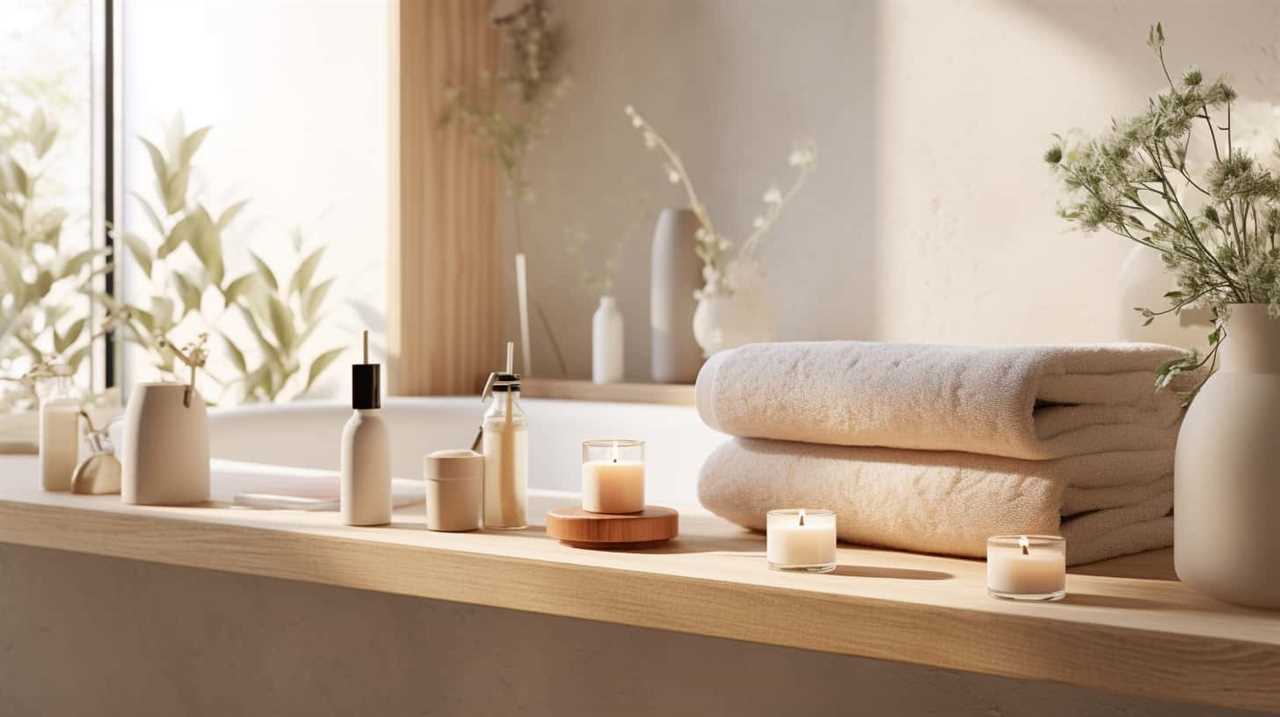
The first step is to clean the jar thoroughly to remove any residue from the previous candle.
Next, choose a new scent that you’d like to fill your space with.
Clean Candle Jar
We begin by cleaning the candle jar using warm, soapy water. This step is essential in preparing the candle jar for refilling. By removing any residue or wax remnants, we ensure a clean and fresh base for our new candle. To facilitate the cleaning process, consider using different cleaning techniques based on the material of your candle jar. Glass jars can be easily cleaned with warm water and mild dish soap. For ceramic or metal jars, a soft cloth or sponge can be used to gently scrub away any dirt or grime. Once the candle jar is clean, it opens up numerous repurposing options, such as using it as a storage container or a decorative piece in your home.
| Material | Cleaning Technique | Repurposing Options |
|---|---|---|
| Glass | Warm water and mild dish soap | Storage container, decorative piece |
| Ceramic | Soft cloth or sponge | Planter, pencil holder |
| Metal | Soft cloth or sponge | Candle holder, flower vase |
Choose New Scent
After cleaning the candle jar, we can now move on to selecting a new scent and preparing the candle jar accordingly. Choosing a new fragrance is an exciting part of the candle refilling process. Here are some tips to help you explore different scents:
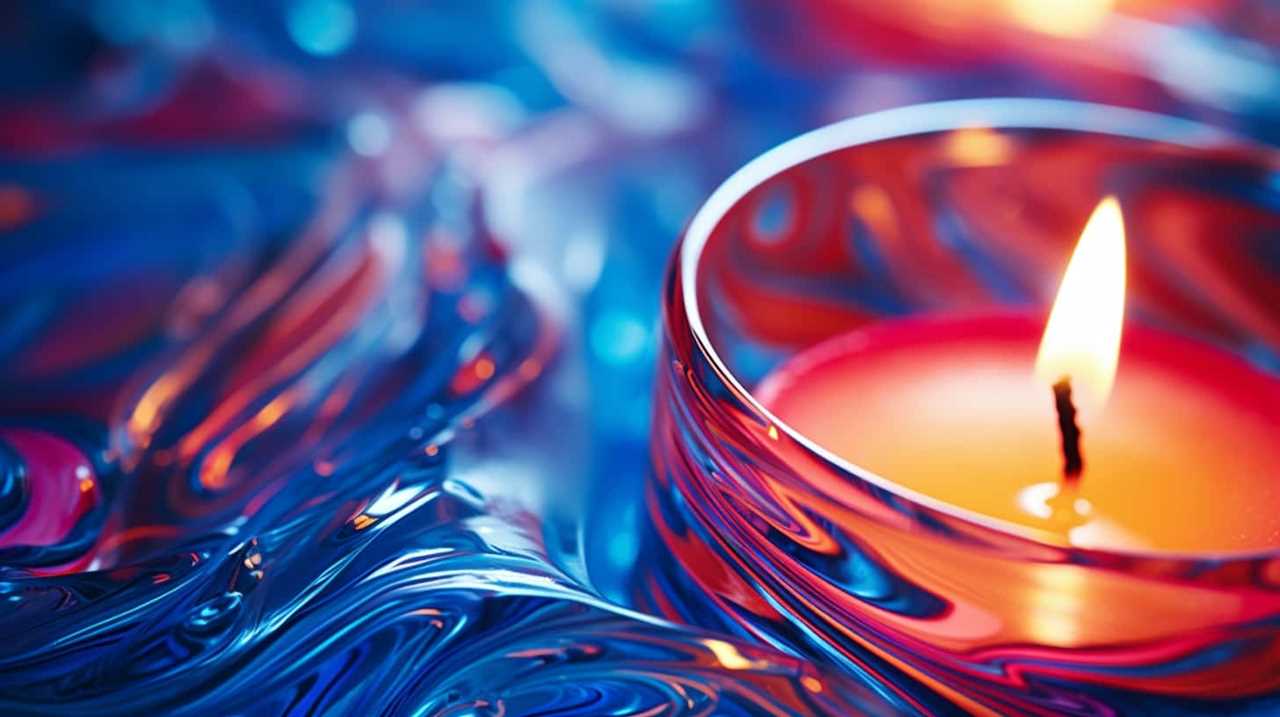
- Consider the occasion or mood: Are you looking for a relaxing scent for a cozy night in, or a refreshing scent for a summer gathering?
- Test before committing: Purchase small samples or visit a candle store to smell different fragrances before making a decision.
- Blend scents: Get creative by mixing different fragrances to create a unique scent that suits your preferences.
- Think about the season: Match your candle scent to the time of year to enhance the ambiance.
Now that you have chosen your new scent, we can move on to the next step: melting and pouring the candle wax.
Melt and Pour
To prepare the candle jar for refilling, we need to melt the wax and pour it into the container. Melt and pour is a popular method for refilling candles as it allows for easy customization and control over the process.
However, it’s important to follow safety precautions when working with hot wax. Always use a double boiler or a heat-resistant container and never leave the melting wax unattended. To prevent accidents, keep a fire extinguisher nearby and work in a well-ventilated area.
Additionally, troubleshooting common issues such as air bubbles or uneven pouring can be resolved by gently tapping the jar to release any trapped air and ensuring a steady hand when pouring.
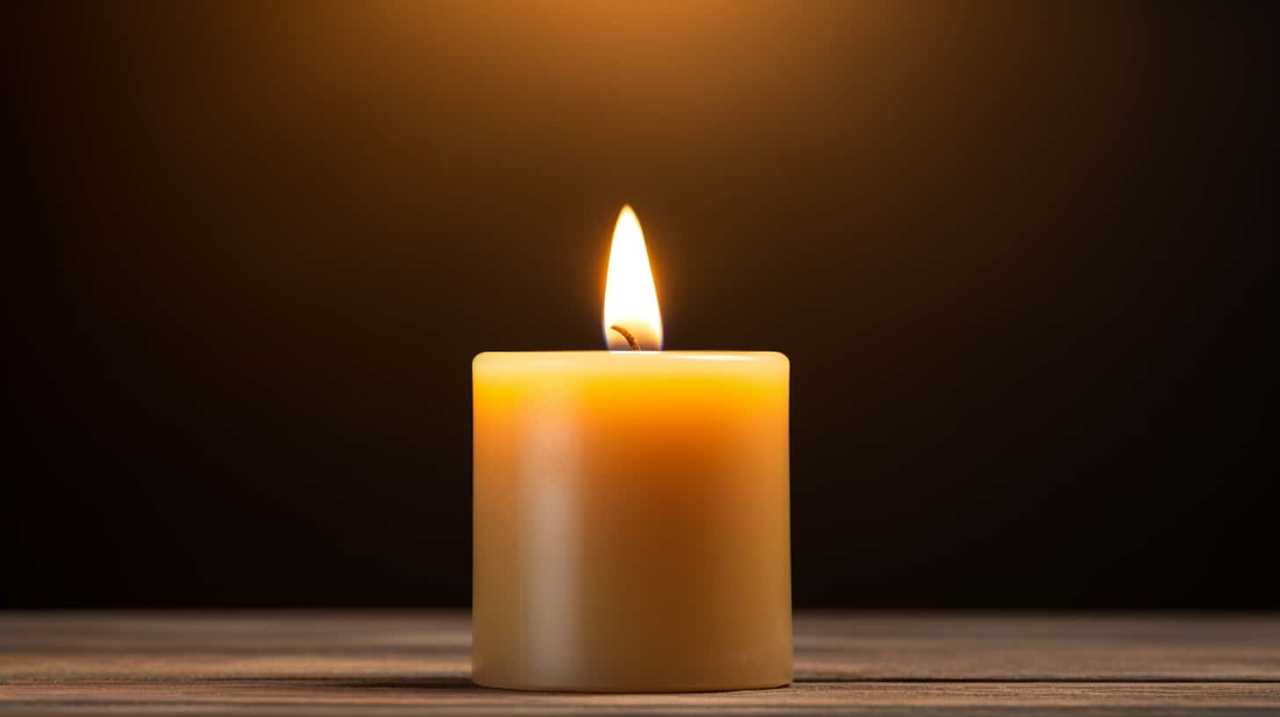
Choose Your Wax and Fragrance
When it comes to refilling a candle, choosing the right wax and fragrance is essential. Understanding the different wax options available, such as soy, beeswax, and paraffin, will help you make an informed decision.
Additionally, selecting the perfect fragrance that suits your preferences and creates the desired ambiance is crucial. Combining the right wax and fragrance will ensure a successful candle refill that enhances your space with a pleasant scent.
Wax Options Explained
Our preferred wax option for candle refills is soy wax due to its clean burn and long-lasting fragrance. When choosing the right wax for your candle refill, it’s important to consider factors such as burn time, scent throw, and sustainability. Here are some wax options explained to help you make an informed decision:
- Soy Wax: Made from soybean oil, this natural wax burns cleanly and slowly, ensuring a longer-lasting candle. It also has a great scent throw and is environmentally friendly.
- Beeswax: Known for its natural golden color and sweet aroma, beeswax candles have a long burn time and purify the air when burned. However, they can be more expensive compared to other options.
- Paraffin Wax: This synthetic wax is popular due to its affordability and wide availability. However, it may release toxins when burned and has a shorter burn time.
- Coconut Wax: Derived from coconut oil, this wax has a creamy texture and excellent scent throw. It has a longer burn time compared to other natural waxes but can be more expensive.
Now that you know about the different wax options, let’s move on to selecting the perfect fragrance for your candle refill.
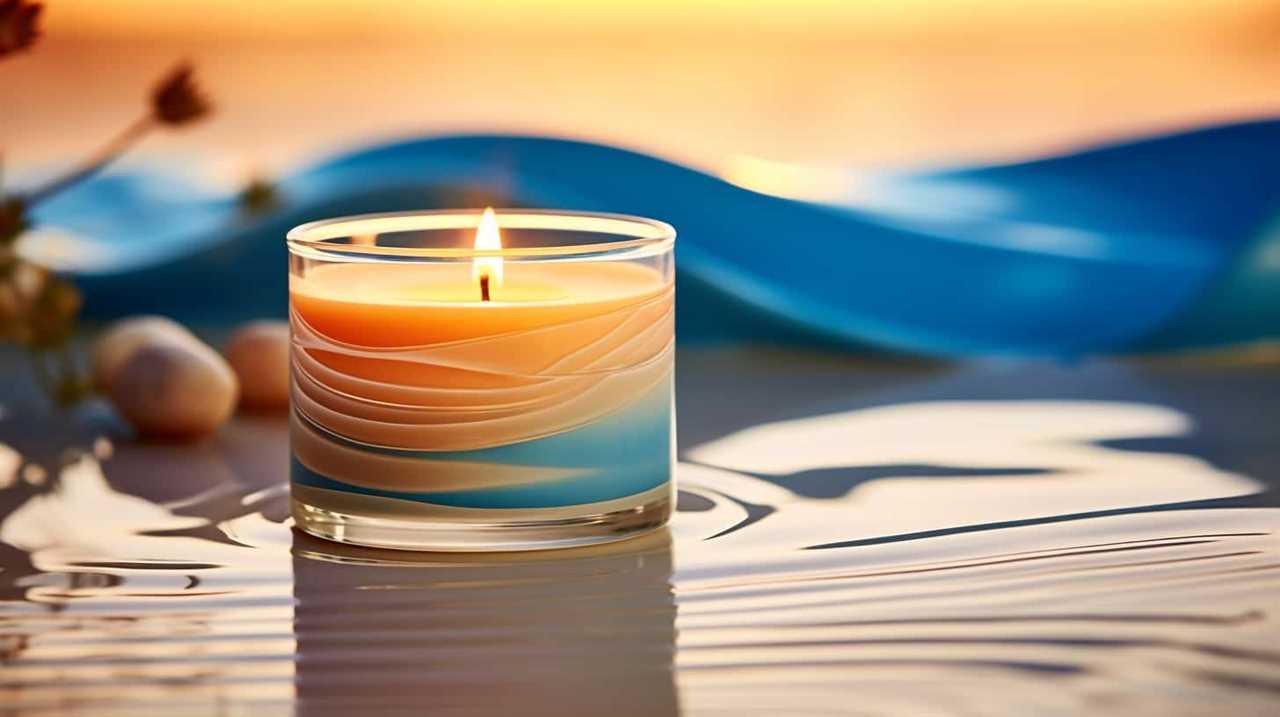
Selecting the Perfect Fragrance
Now that we have explored the different wax options, let’s delve into the process of selecting the perfect fragrance for your candle refill. Choosing a fragrance that matches your mood or selecting a fragrance based on the season can enhance the ambiance of your space and create a more enjoyable experience. To help you select the perfect fragrance, consider the following table:
| Fragrance | Mood |
|---|---|
| Citrus | Energizing and uplifting |
| Floral | Relaxing and calming |
| Woody | Cozy and warm |
| Spicy | Invigorating and exotic |
Combining Wax and Fragrance
To begin combining the wax and fragrance for your candle refill, we’ll need to select the appropriate wax and fragrance that best suits your preferences. Here are the steps to follow:
- Choose Your Wax: There are different types of wax available, such as soy wax, beeswax, and paraffin wax. Consider factors like burn time, scent throw, and eco-friendliness when selecting your wax.
- Select Your Fragrance: When it comes to fragrance, you have a wide range of options. You can choose from essential oils, which not only provide a beautiful aroma but also offer various health benefits. Alternatively, you can opt for fragrance oils that come in a variety of scents and intensities.
- Experiment with Blending: If you’re feeling adventurous, try blending different fragrances to create a unique scent. Be mindful of the proportions to ensure a balanced aroma.
- Test and Adjust: Once you’ve combined your wax and fragrance, make a small test candle to assess the scent throw and burn quality. If needed, adjust the fragrance or wax quantities accordingly.
Melt the Wax
We will begin by melting the wax for the candle refill. Choosing the right melting method is crucial to ensure a successful refill.
The two common methods are the double boiler and microwave methods. The double boiler method involves placing a heatproof container with wax in a pot of simmering water. This method offers a gentle and controlled heat, preventing the wax from overheating.

On the other hand, the microwave method is quicker but requires caution to avoid overheating or burning the wax. Regardless of the method chosen, achieving the perfect wax consistency is essential for a smooth and even burn.
To achieve this, it’s important to heat the wax slowly and stir it regularly to prevent any lumps or clumps. This will ensure a beautiful and professional-looking candle refill.
Add Fragrance Oil
When it comes to adding fragrance oil to a candle refill, there are a few key points to keep in mind.
First, choosing the right scent is crucial in creating the desired ambiance.
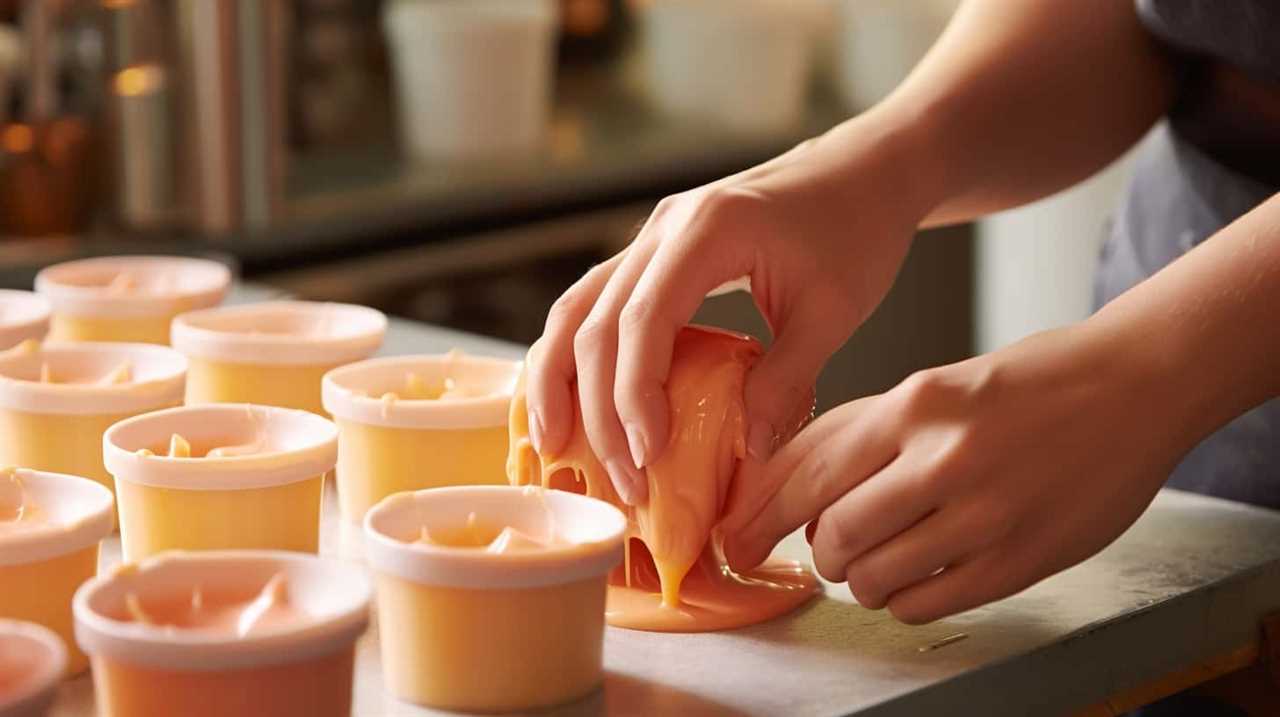
Next, measuring the fragrance oil accurately ensures the right balance of scent.
Finally, mixing the oils properly ensures an even distribution of fragrance throughout the wax.
Paying attention to these points will result in a beautifully scented candle refill.
Choosing the Right Scent
Once you have determined the type of fragrance oil you want to use, it’s important to consider the scent intensity and compatibility with your chosen candle. Choosing the right fragrance for your candle refill is crucial in creating a pleasant and inviting atmosphere.
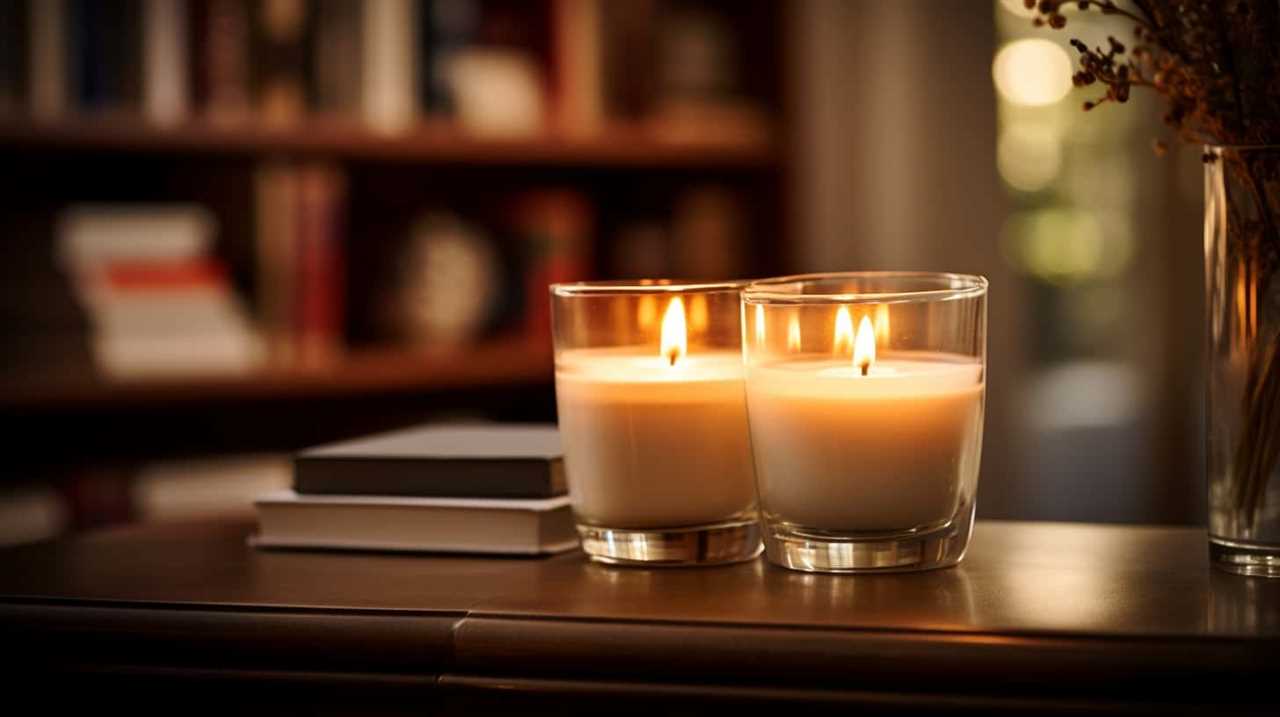
Here are some tips for scent selection:
- Consider the occasion: Different scents evoke different moods, so think about the purpose of your candle. Are you looking for a relaxing scent for a spa-like experience or a fresh scent for a clean and vibrant ambiance?
- Test it out: Before committing to a fragrance, try a sample or small jar candle to see how it smells when burned. This will help you gauge the scent intensity and ensure it complements your space.
- Match the season: Consider scents that align with the time of year. Choose warm and cozy fragrances like vanilla or cinnamon for the colder months, and opt for light florals or citrus scents for the spring and summer.
- Personal preference: Ultimately, choose a fragrance that you enjoy and that reflects your personal taste. After all, you’ll be the one enjoying it!
Once you have chosen the perfect fragrance, it’s time to move on to measuring the fragrance.
Measuring the Fragrance
How do we accurately measure the fragrance oil for our candle refill?
When it comes to measuring the fragrance oil, it’s essential to use precise techniques to ensure the right amount is added. One common method is to use a scale that measures in grams or ounces. This allows for accurate measurement and consistency in scent strength.
Another technique is to use a dropper or pipette to carefully measure out the desired amount of fragrance oil. It’s important to follow the recommended guidelines for fragrance concentration, which can vary depending on the size of the candle.
During the fragrance selection process, it’s crucial to consider the potency of the scent and how it will complement the candle’s wax. With the right measuring techniques, we can ensure a perfectly scented candle refill.
Now, let’s move on to the next step: mixing the oils.
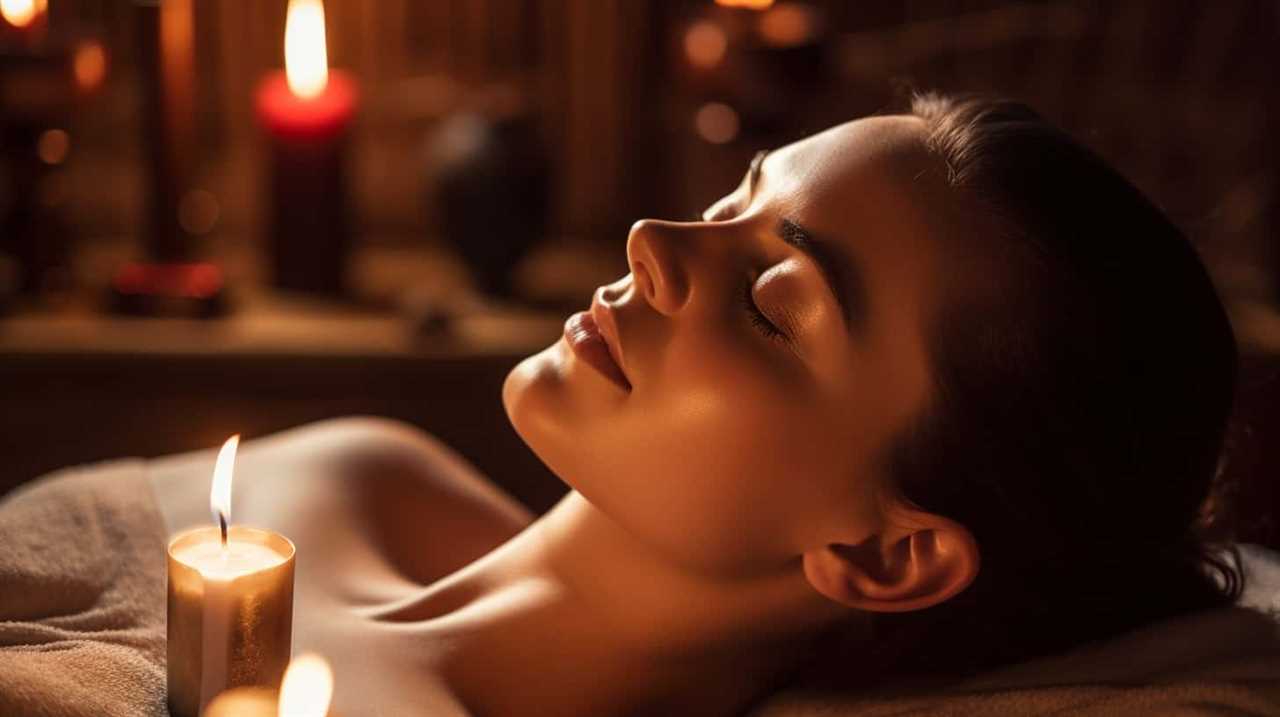
Mixing the Oils
To begin mixing the oils, we’ll add the fragrance oil using a dropper or pipette. This step is crucial in creating the perfect scent combination for your candle refill. Here are some mixing techniques to help you achieve the desired fragrance:
- Start with a small amount: Begin by adding a few drops of fragrance oil and gradually increase the amount until you reach the desired strength. This will prevent overpowering the scent.
- Blend different oils: Experiment with different fragrance oils to create unique scent combinations. You can mix floral and citrus oils for a refreshing aroma or combine vanilla and spice oils for a cozy ambiance.
- Stir gently: After adding the fragrance oil, use a stirrer to gently mix the oils together. Avoid vigorous stirring as it may create air bubbles in the mixture.
- Allow the oils to settle: Give the oils some time to blend together and settle before pouring them into your candle container. This will ensure that the fragrance is evenly distributed throughout the candle.
Pour the Melted Wax Into the Jar
We carefully pour the melted wax into the jar, ensuring that it fills the container to the desired level. This step is crucial in the candle refilling process, as it determines the final appearance and performance of the candle.
When choosing the right container for your candle refill, consider factors such as size, material, and design. A well-chosen container will enhance the overall aesthetic and functionality of the candle.
Additionally, there are alternative methods for refilling candles, such as using candle wax beads or pre-made candle refill kits. These options provide convenience and ease of use for those who prefer a quicker approach.
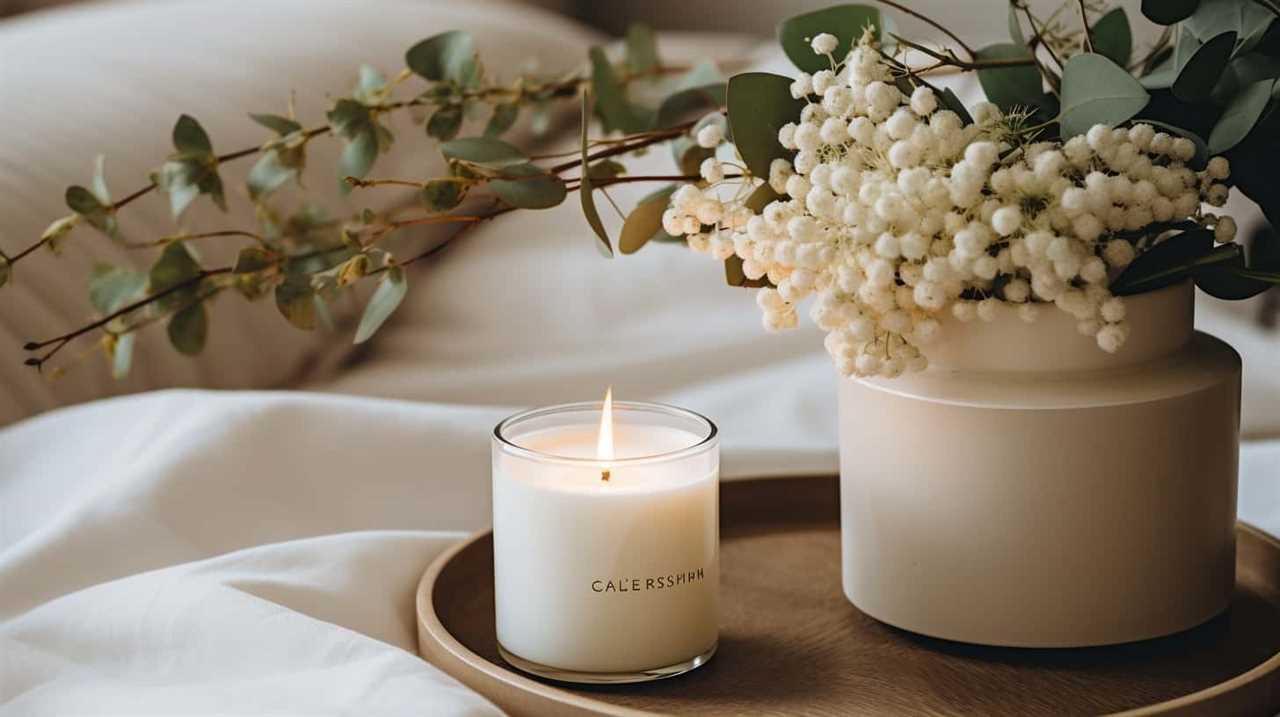
Once the melted wax is poured into the jar, it’s important to let the candle cool and set before using it. This allows the wax to solidify and ensures a safe and optimal burning experience.
Let the Candle Cool and Set
After pouring the melted wax into the jar, we must allow the candle to cool and set before it can be used. Here are some tips for handling hot wax and common mistakes to avoid during this crucial step:
- Avoid moving the candle: Once the wax is poured, it’s important to let it cool undisturbed. Moving the candle can cause uneven cooling and result in a lopsided or uneven surface.
- Provide proper ventilation: Make sure the room is well-ventilated to allow for proper cooling. This will help the candle set evenly and prevent any unpleasant odors.
- Be patient: It may be tempting to check if the candle has set, but resist the urge. Allow sufficient time for the wax to cool completely, usually a few hours or overnight.
- Avoid drafts: Keep the candle away from drafts, as they can interfere with the cooling process and cause the wax to set unevenly.
Once the candle has cooled and set, it’s time to move on to the next step: trimming the wick.
Trim the Wick
Once the candle has cooled and set, we can now proceed to trim the wick for optimal burning. Wick maintenance is essential for candle safety and ensuring a clean, even burn.
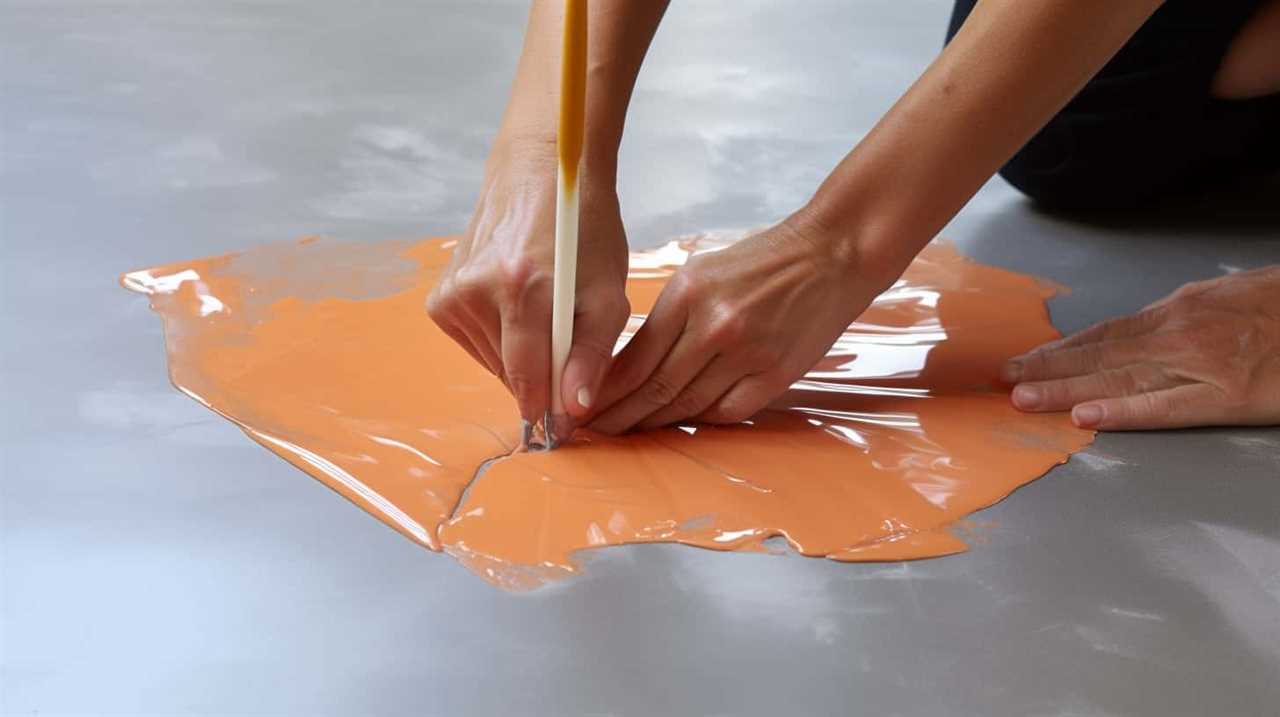
To trim the wick, you’ll need a pair of scissors or a wick trimmer. First, extinguish the candle if it’s still burning. Then, remove any debris or soot from the candle using a tissue or a small brush.
Trim the wick to a length of about ¼ inch, as this helps prevent excessive smoke and soot. A longer wick can cause the candle to burn too hot and create a larger flame, increasing the risk of accidents.
Label Your Refilled Candle
To properly label our refilled candle, we’ll need a permanent marker or a label maker. Proper labeling is important for homemade candles for several reasons:
- Safety: Labeling your candle with the type of wax and any added fragrance or essential oils can help prevent any allergic reactions or mishaps. It also ensures that the candle is used safely.
- Identification: Clear labeling helps you easily identify the scent, color, and other characteristics of your candle. This is especially useful if you plan to make different types of candles or give them as gifts.
- Professionalism: A well-designed and personalized label adds a touch of professionalism to your homemade candles. It gives them a polished and finished look, making them more appealing to buyers or gift recipients.
- Creativity: Labeling your candle also gives you the opportunity to showcase your creativity. Experiment with various fonts, colors, and designs to create unique and eye-catching labels that reflect your style and personality.
Clean up Any Spills or Mess
To clean up any spills or mess, we’ll need a cloth or paper towel and a mild cleaning solution. If you accidentally spill any wax or oil during the refilling process, it’s important to act quickly to prevent any permanent stains or damage.
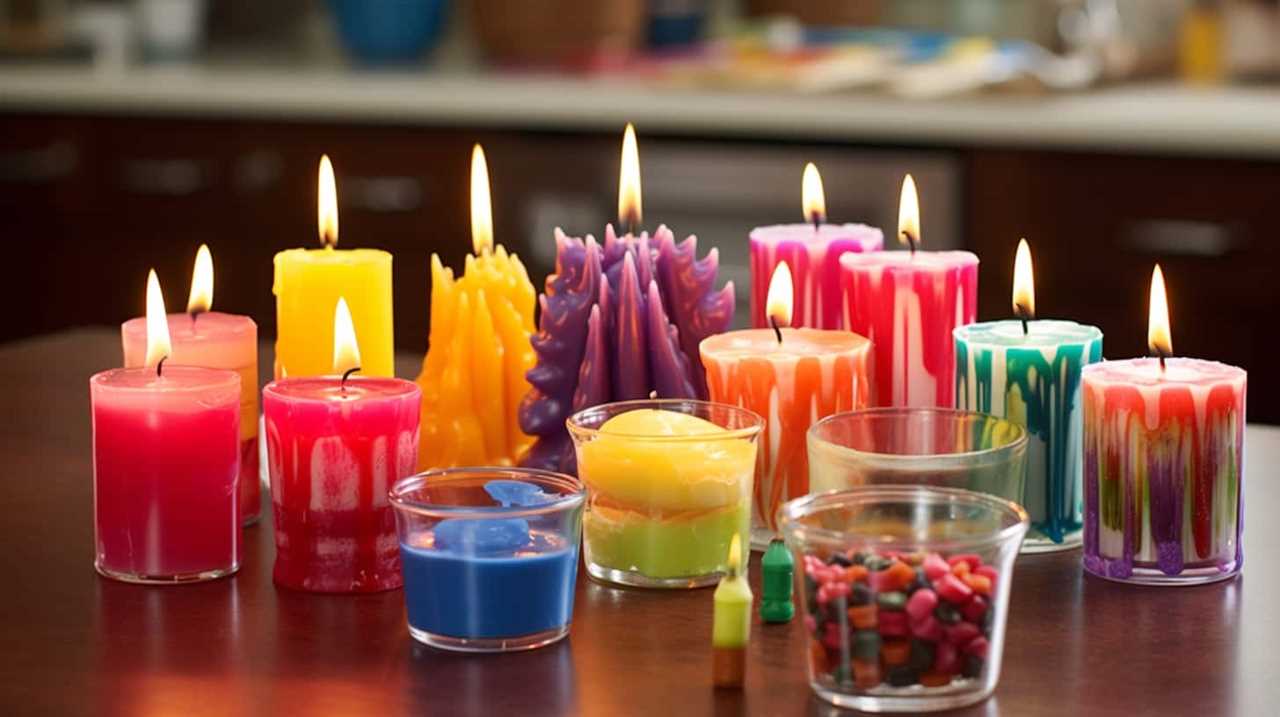
Gently blot the spill with a cloth or paper towel to absorb as much liquid as possible. Avoid rubbing, as this can push the spill deeper into the fabric or surface. If the spill leaves a residue, use a mild cleaning solution to remove it. Be sure to follow the manufacturer’s instructions for the specific cleaning solution you’re using.
Once the spill is cleaned up, take a moment to assess what caused the spill and consider implementing preventive measures for future refills. This will help you avoid any spills or messes in the future.
Now that your clean-up is complete, let’s move on to the next step and enjoy your newly refilled candle.
Enjoy Your Newly Refilled Candle
Now that we’ve completed the refill process, let’s sit back and enjoy our freshly refilled candle. Here are a few things to keep in mind to maximize your enjoyment and ensure candle safety precautions:

- Choose the right location: Find a safe and suitable place to burn your candle, away from flammable materials and out of reach of children or pets.
- Trim the wick: Before lighting the candle, make sure to trim the wick to about 1/4 inch. This will help prevent excessive soot and ensure a clean burn.
- Burn in intervals: To prolong the life of your candle, burn it in shorter intervals of 2-3 hours. This prevents the wax from overheating and extends the overall burn time.
- Enjoy the benefits: As you light your newly refilled candle, take a moment to appreciate the warm glow and soothing fragrance it brings to your space. Relax, unwind, and enjoy the ambiance.
Tips for Maintaining Your Refilled Candle
What are some important tips we should keep in mind to maintain our newly refilled candle? Taking proper care of your candle not only helps to maintain its fragrance but also ensures its longevity. Here are some essential tips for candle care:
| Tip | Description |
|---|---|
| Trim the Wick | Before each use, trim the wick to ¼ inch to prevent excessive smoke and uneven burning. |
| Burn in Intervals | Allow the candle to burn for 2-3 hours at a time to create an even melt pool and prevent tunneling. |
| Store Properly | Store candles in a cool, dry place away from direct sunlight to maintain their fragrance and color. |
Frequently Asked Questions
How Long Does It Take for the Melted Wax to Cool and Set in the Jar?
Cooling time and setting time for the melted wax in the jar depend on various factors such as the amount of wax, room temperature, and ventilation. It’s important to let it cool completely before using the candle again.
Can I Use Any Type of Wax to Refill My Candle?
Yes, you can use different types of wax to refill your candle. However, it’s important to choose a wax that is compatible with your candle’s original wax. Follow these tips for successful candle refilling.
How Often Should I Trim the Wick?
We should trim the wick regularly to keep our candle burning bright. By following best practices for wick maintenance, we ensure a clean and even burn, enhancing the ambiance of our space.

What Kind of Fragrance Oils Are Safe to Use in Candles?
Natural fragrance oils and essential oils are safe options to use in candles. They provide a variety of benefits such as aromatherapy and a more eco-friendly choice compared to synthetic fragrance oils.
Are There Any Special Cleaning Products I Should Use to Clean up Spills or Messes?
Special cleaning products are not necessary to clean up spills or messes when refilling candles. Simply wipe up any spills with a damp cloth and use a gentle soap and water solution for cleaning messes.
Conclusion
In conclusion, refilling a candle is a simple and rewarding process that allows you to enjoy your favorite scents for longer.
Did you know that approximately 35% of candle users refill their candles to reduce waste? By refilling your candle, you not only save money but also contribute to a more sustainable environment.
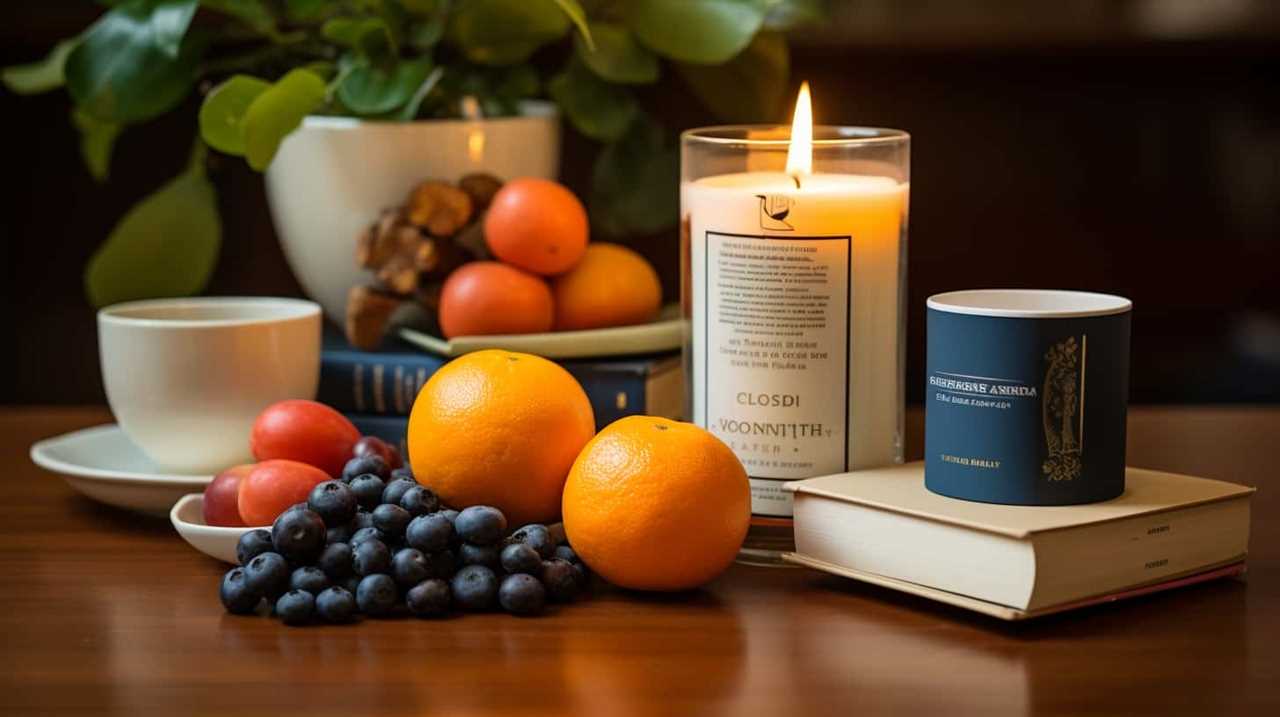
So why not give it a try and enjoy the cozy ambiance of a freshly refilled candle in your home?
